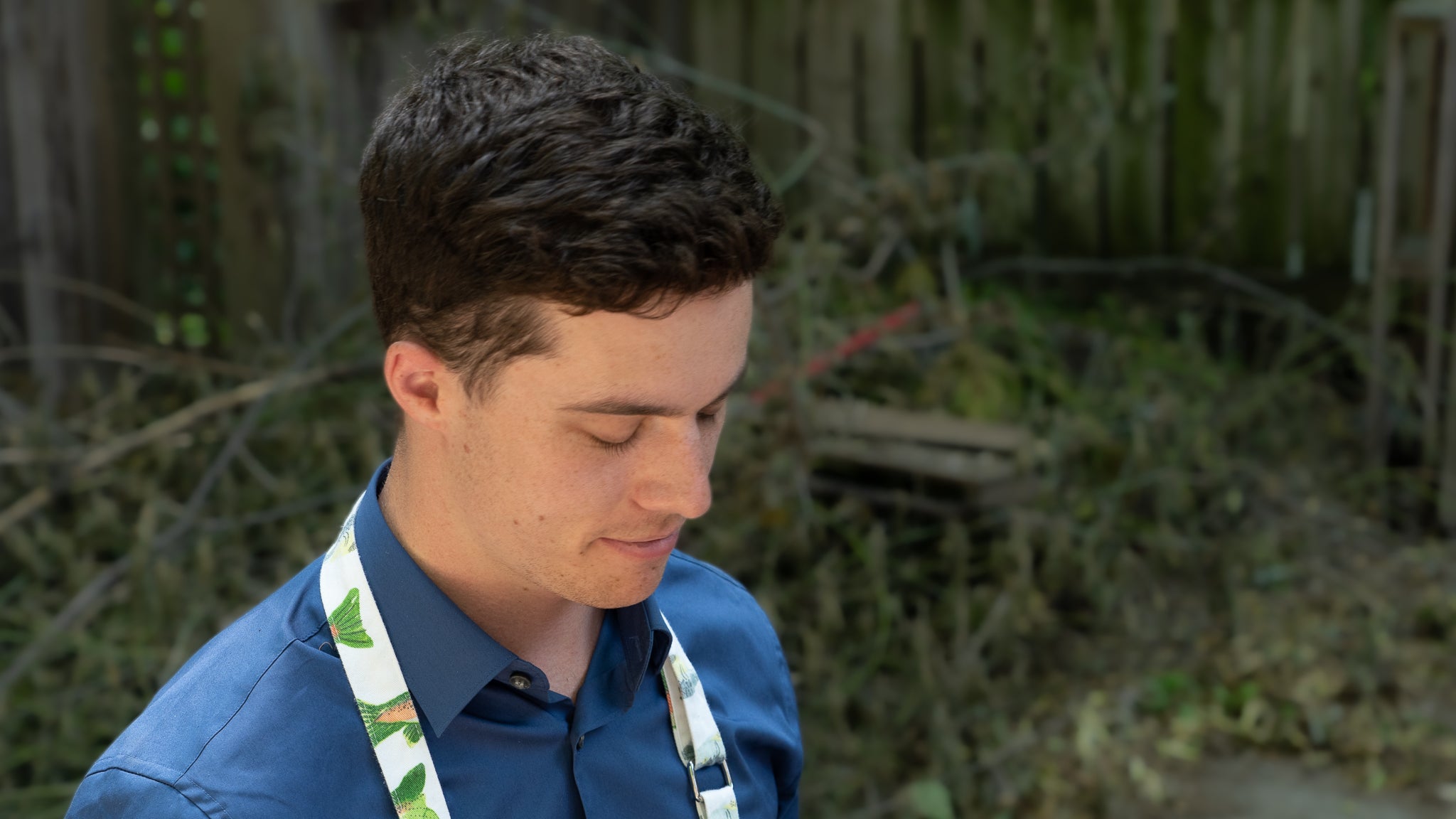"Konro-ing" with Jon Klip
Everyone knows someone who loves grilling, and at Tosho we love grilling as well!
That’s why we asked our good friend Jon Klip from Affinity Fish to give us a crash course on using konro, a traditional Japanese charcoal grill that we’ll be offering to the public later this month.

Jon has not only worked at Tosho in the past, where he developed a deep understanding of Japanese knives, but also traveled to Japan to further this education and study one of Japan’s most meticulous and technically intensive cuisines, Kaiseki (A multi-course fine dining experience often involving elaborate preparation and presentation with roots in traditional Japanese culinary methods). It is with this extensive knowledge and drive that Jon is now opening his new fish store, Affinity Fish, on Dundas West July 15th along with his business partner and friend Matt Taylor who has followed a similar journey as Jon. First working at Tosho and then going on to work at some of the most esteemed restaurants in Canada including URSA Restaurant, Actinolite, Shoushin, The Restaurant at Pearl Morissette, and Sakai Bar. Their desire to work with locally and ethically sourced quality fish has motivated them to start Affinity fish together.
Konro offer a rather unique grilling experience especially when paired with binchotan, a naturally made charcoal using Ubame Oak (a tree found in Japan as well as some parts of Korea and China). Binchotan does come in a variety of grades that do provide longer or more consistent burn times but the most important thing to consider is the size of the binchotan you purchase. Larger binchotan burns longer, smaller burns shorter.

Konro grills have a rather unparalleled ability to retain heat due to their unique construction methods and materials which in turn allows the charcoal to burn hotter, longer, and more consistently than other grills. They are made of a porous clay that is only found in one portion of the Japanese coastline. When made in the traditional “Kiridashi” style they are literally carved out of the earth into their final shape, this is the construction that offers the best heat retention and heat direction. The scraps from this mining process are pressed into grills as well, which offer more affordable alternatives to the “Kiridashi” style. These pressed konro do still offer better heat direction and retention than other charcoal grills but it is not as a good as the “Kiridashi” style.

Especially when used with binchotan, these grills create cleaner tasting food (due to the binchotan being created without the use of any chemicals) and when dealing with proteins they are moister and juicery than their conventionally charcoal or gas grilled counterparts.
Knowing this Jon gave us some pointers on how to use these grills most effectively while also teaching a few choice pieces of Japanese cooking philosophy that we believe can be applied to your cooking at home!

Get yourself something that expedites the charcoal ignition process. In this case Jon brought what essentially boils down to being a portable heating element on a stick. It is extremely convenient for igniting the charcoal right in the grill without having the need to use any sort of external flammable materials that could impart unwanted chemicals or flavours into your charcoal. It is also very “set it and forget it” which is nice when having to prepare the food for being grilled.

Prep, prep, prep! These grills cook very quickly and you’ll want to have everything ready prior to grilling. With this in mind he taught as a rather simple but effective trick when skewering fish (that could potentially be applied to other protein or gillables) that is used in Japanese cooking due to their methods of fish butchery which promotes a less wasteful style of preparation. When skewering, instead of cutting portions to be exactly uniform along the length of the skewer as this can often lead to wasteful off-cuts, wrap the portions in a way that create uniform thickness on the skewer. It seems so basic yet it's not something that we at the shop necessarily considered prior to Jon’s explanation. On the topic of skewering, having the correct skewers matters! Longer metal skewers are much more effective for using on konro. Jon also recommends twisting the skewers lightly while grilling to prevent the ingredients from sticking to them thus making it much easier to remove the skewers (this only works with the cylindrical metal ones!).

Pay attention! Because these grills function very similarly to a high power broiler they require more attention as whatever your grilling can burn if you aren’t careful. It will take some time to become familiar with the natural hotspots of the konro as you use it but it will become extremely rewarding once mastered.
Don’t fan too much. Fanning is a great way to increase the heat of the grill but when done too much will not only take away heat but kick up unwanted ash from the binchotan. If you would like to increase the heat drastically you can allocate more binchotan to your grill area and fan that aggressively after removing the food from the grill. Once the heat has increased, return your food to the grill and get cookin!
With the stage set and the knowledge imparted, Jon cooked for us some delectable locally sourced fish that they will soon be offering at their retail storefront along with some other locally sourced seasonal ingredients.
Without further ado, feast your eyes!




In their own words, “The goal of Affinity Fish is to provide Canadian people with a higher quality of fish and seafood through careful handling, minimizing animal suffering, and prioritizing sustainable fishing practices from lake to table.”



